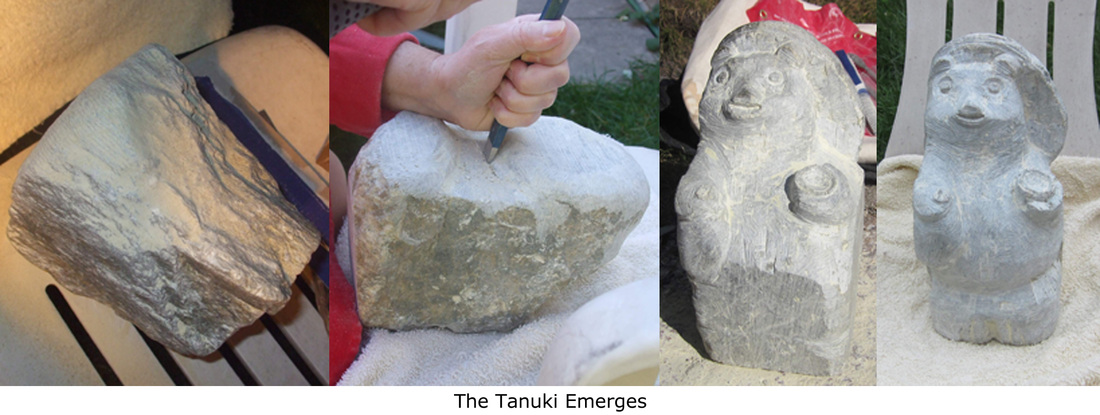By Jill Snider Lum
For most of my life, when asked about my artistic abilities, I'd say, "Sorry; I'm artistically impaired."
 And I thought I was speaking the truth. I can't draw to save my life; the light-and-shadow-play of painting and pastel-work eludes me; and while I'm proficient at thread-craft, I can't work without a pattern, so my thread-work is really an expression of someone else's artistry. Creating art by putting materials together – pencils, charcoal, pastels or paints onto paper, board or canvas – is just beyond me. Despite all my efforts, even with the helpful teaching of others, I can't do it; I've no instinct for it. Artistic ability? Feh. Not me.
And I thought I was speaking the truth. I can't draw to save my life; the light-and-shadow-play of painting and pastel-work eludes me; and while I'm proficient at thread-craft, I can't work without a pattern, so my thread-work is really an expression of someone else's artistry. Creating art by putting materials together – pencils, charcoal, pastels or paints onto paper, board or canvas – is just beyond me. Despite all my efforts, even with the helpful teaching of others, I can't do it; I've no instinct for it. Artistic ability? Feh. Not me.But not long ago I was with a group of friends on vacation by the lake, and one of them was carving a crouching cat out of soapstone. I was, to be honest, madly envious of her work. She'd started with a small, grey, rectangular block, and this beautiful little dark-green cat was emerging from it under her hands. It looked like so much fun; so tactile and creative; and in conception, almost miraculous.
But of course, I thought, I could never do that. I can't make anything artistic. Two-dimensional artwork is impossible for me. Three-dimensional art... I can't even conceive of it.
I voiced this to my friend as she worked. "You might not be right about that," she said. "Carving is a different kind of process. Drawing and painting are additive – you're putting lines and colours there that weren't there before. But carving is a subtractive art. You're removing the parts that don't belong."
That was something I'd never thought of. To my surprise, it struck a chord with me. When we got back to the city, I went with some other sculpting friends to a sculpture supply place, and bought myself a rock. Armed with a set of wood-chisels, a tack-hammer, some rifflers and a rasp – I hadn't yet been exposed to the point-chisel, much less the scutch – and with the support of my friends who loved carving, I began the process of subtraction.
I knew what I wanted to make – a Japanese mythological creature called a Tanuki. So I'd picked out my rock according to the shape that seemed most likely for it. I looked at pictures of Tanuki in books, at the cast-porcelain ones, the carved wooden ones... even a little Tanuki figurine I'd found, and was using as a guide to Tanuki anatomy.
As I began to work with the rock, discovering how to use my chisels and rasps, I discovered something else, something remarkable. Three-dimensional subtractive art made sense to me, in a way two-dimensional additive art never had.
After a while, it no longer felt as though I were making a rock into a Tanuki. Instead, I realized the Tanuki was hiding in the rock, and I was getting rid of the bits of rock that weren't a Tanuki. I'd heard that cliché before, but never realized what it meant, what mental process it referred to.
The Tanuki in the rock wasn't standing in the way I'd thought he should be. He wasn't an upright, chipper Tanuki. He'd drunk a lot of sake, and he was bombed out of his skull, leaning against a wall and grinning pie-eyed at the world. His straw hat was crooked, distorted a bit because of the way he was leaning. Instead of the traditional fresh sake flask and promissory note that he was supposed to be carrying, he had a empty cup in one hand, and an open flask in the other, which he was thinking of pouring from if he could only manage the coordination. From the look on his face, he wasn't quite sure.
I continued removing non-Tanuki layers of soapstone, and the more I subtracted, the more individual he became. And he looked, I realized, not like Tanuki statues I'd seen, but like my own subconscious impression of a Tanuki: fun-loving, sake-loving, not terribly reliable but basically good-hearted, looking for the next party and not concerned with outward appearances – he could shape-shift if he wanted to, but this one couldn't be bothered. He was having too good a time.
I'm still working on him. I need to remove some more stone that's keeping me from seeing all of him, and then begin the process of sanding him smooth. He'll be shades of gold and beige and dark green, in a pattern that reminds me of the fur of wild raccoon-dog tanuki, the basis for the legendary Tanuki who inhabit Japanese lore.
It's amazing how much pleasure I'm getting out of not being artistically impaired!
This is an excerpt from "Touchstones," found on the website: sculptorstouch.com

